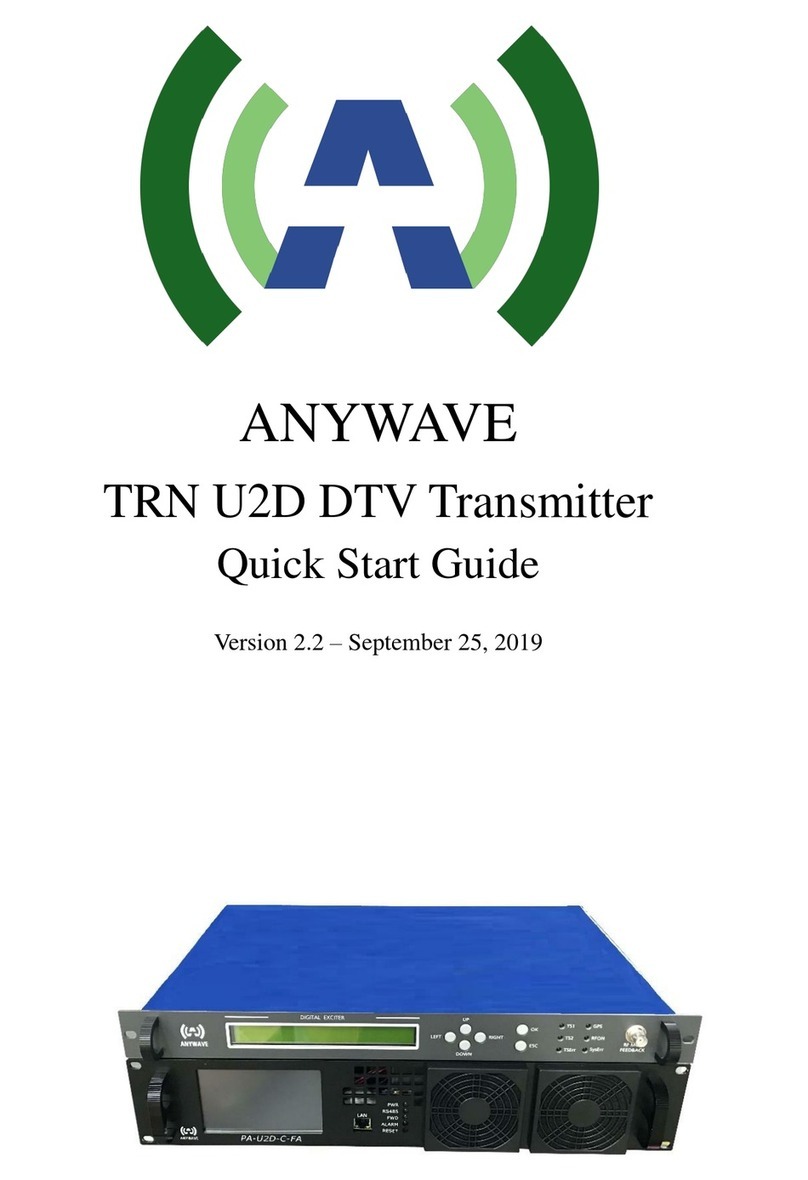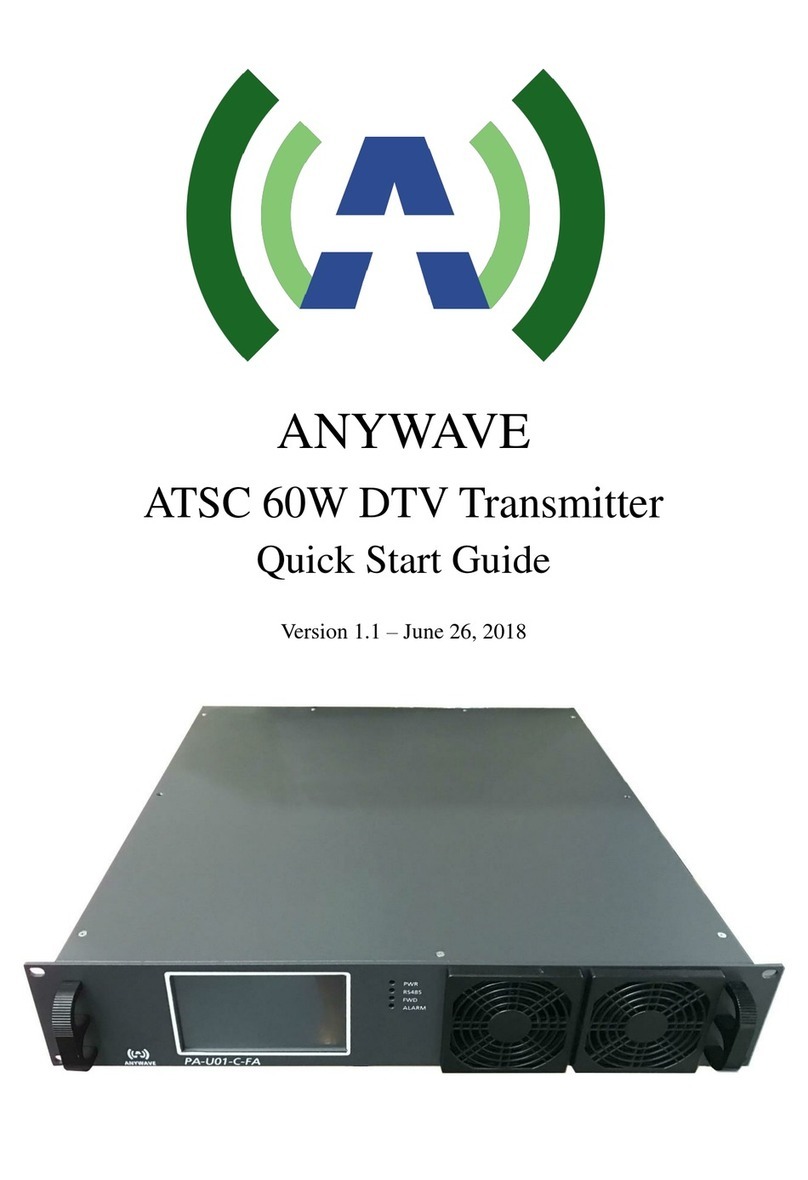Anywave ATSC 1KW User manual
Other Anywave Transmitter manuals
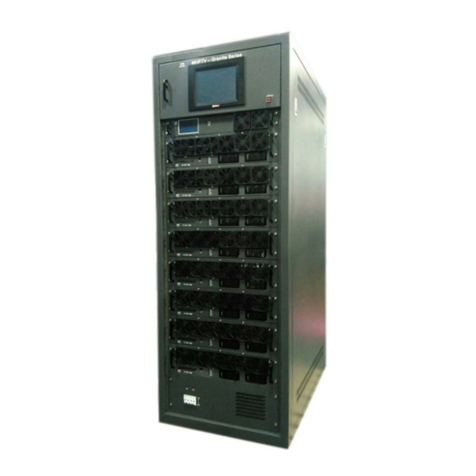
Anywave
Anywave MHPTV User manual
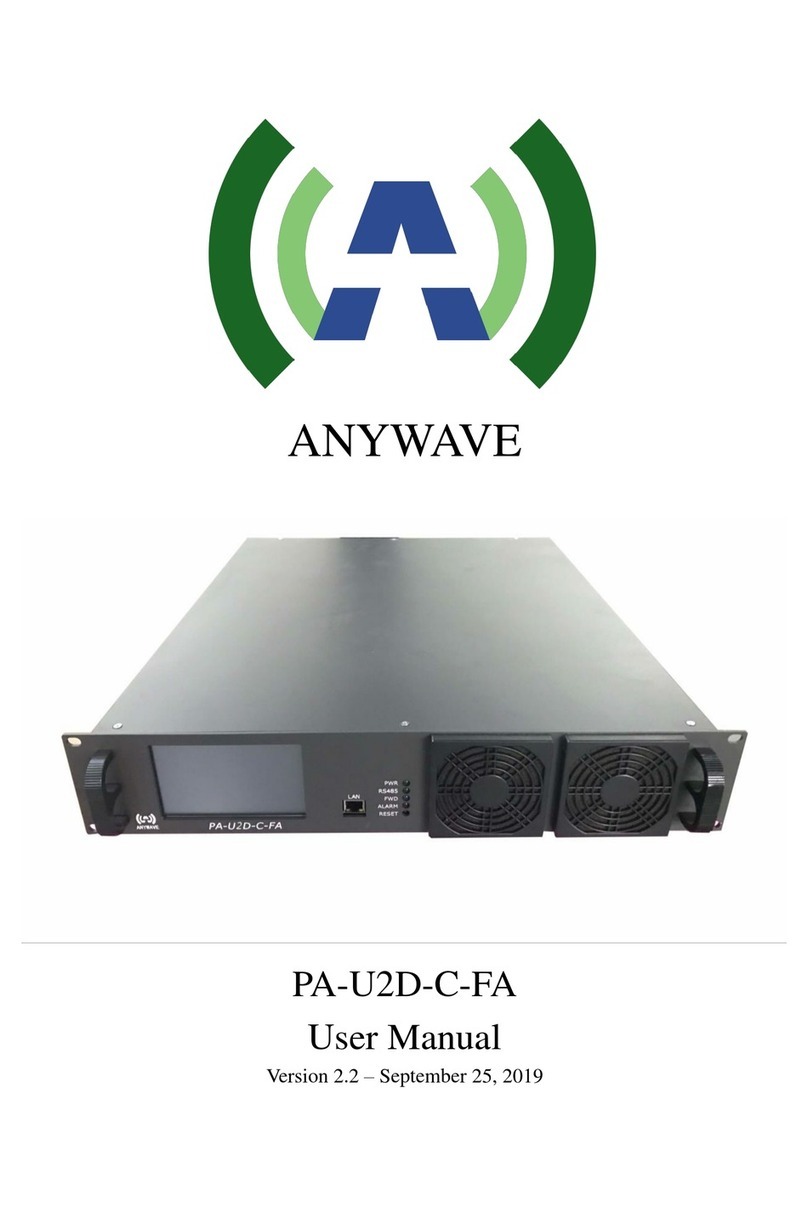
Anywave
Anywave PA-U2D-C-FA User manual
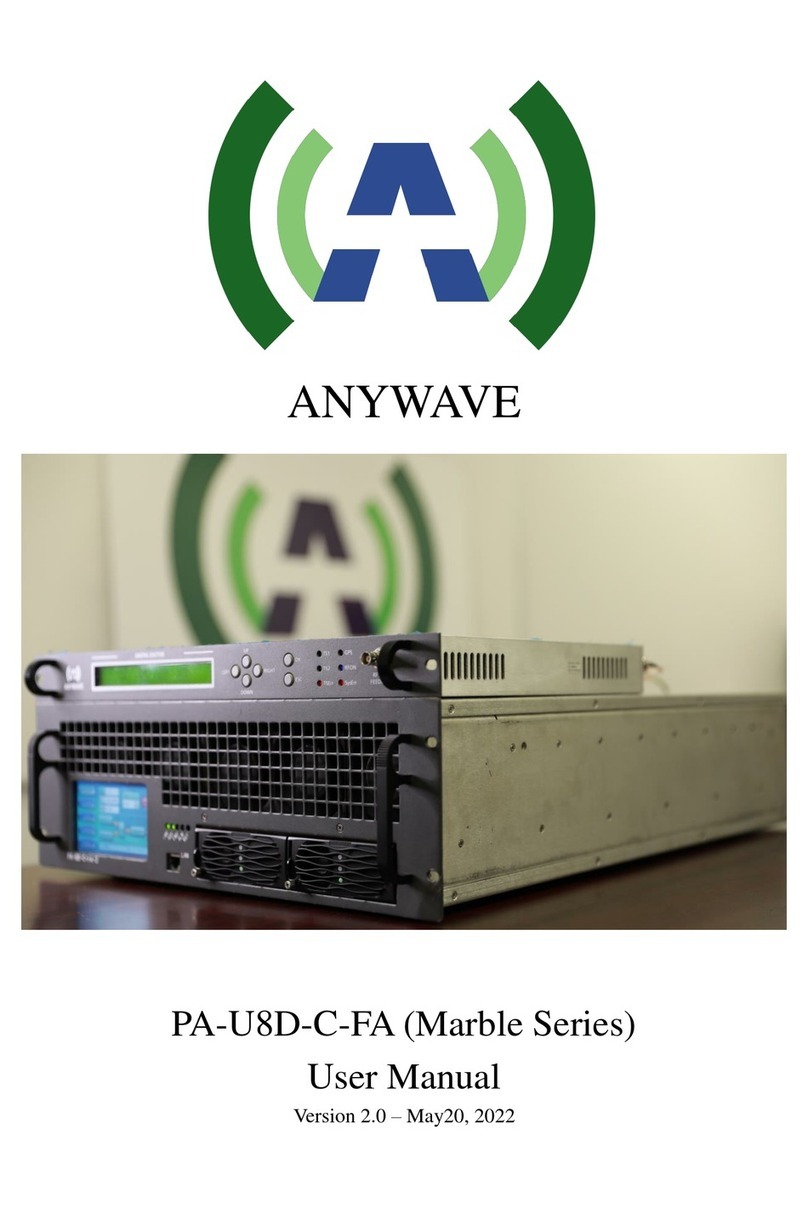
Anywave
Anywave Marble Series User manual
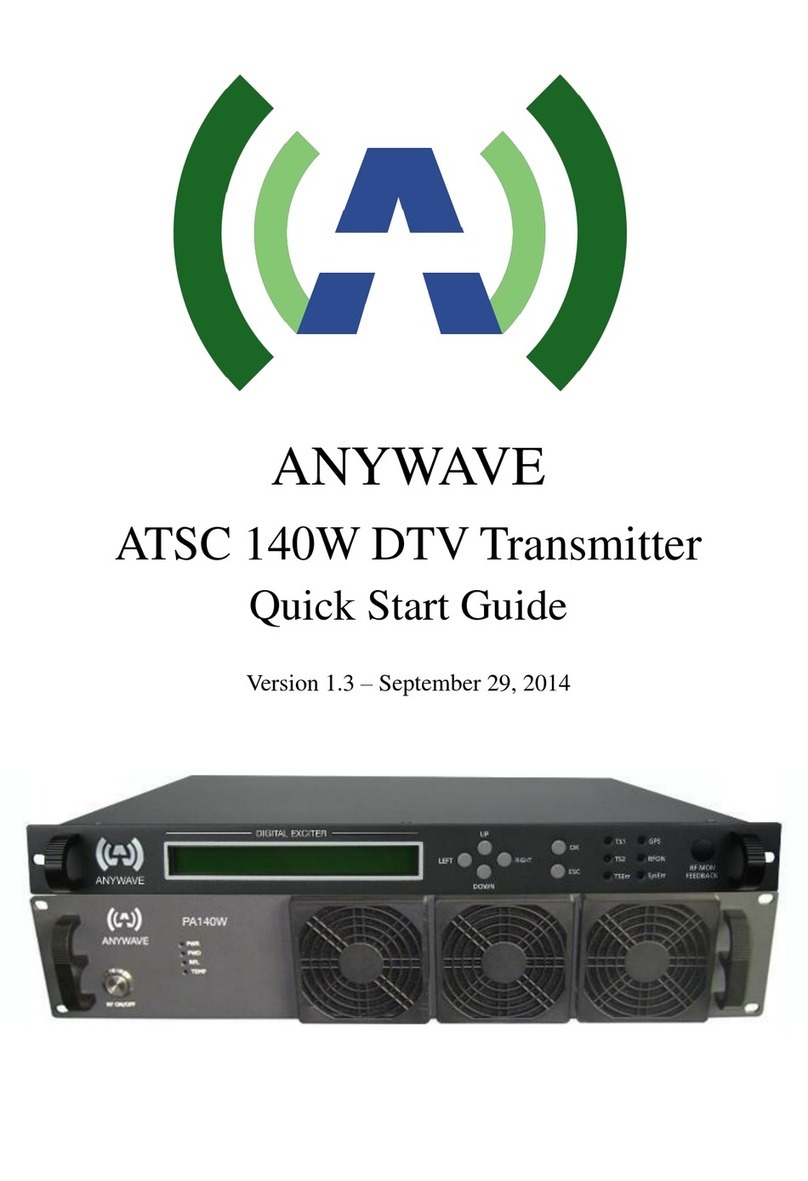
Anywave
Anywave ATSC 140W User manual
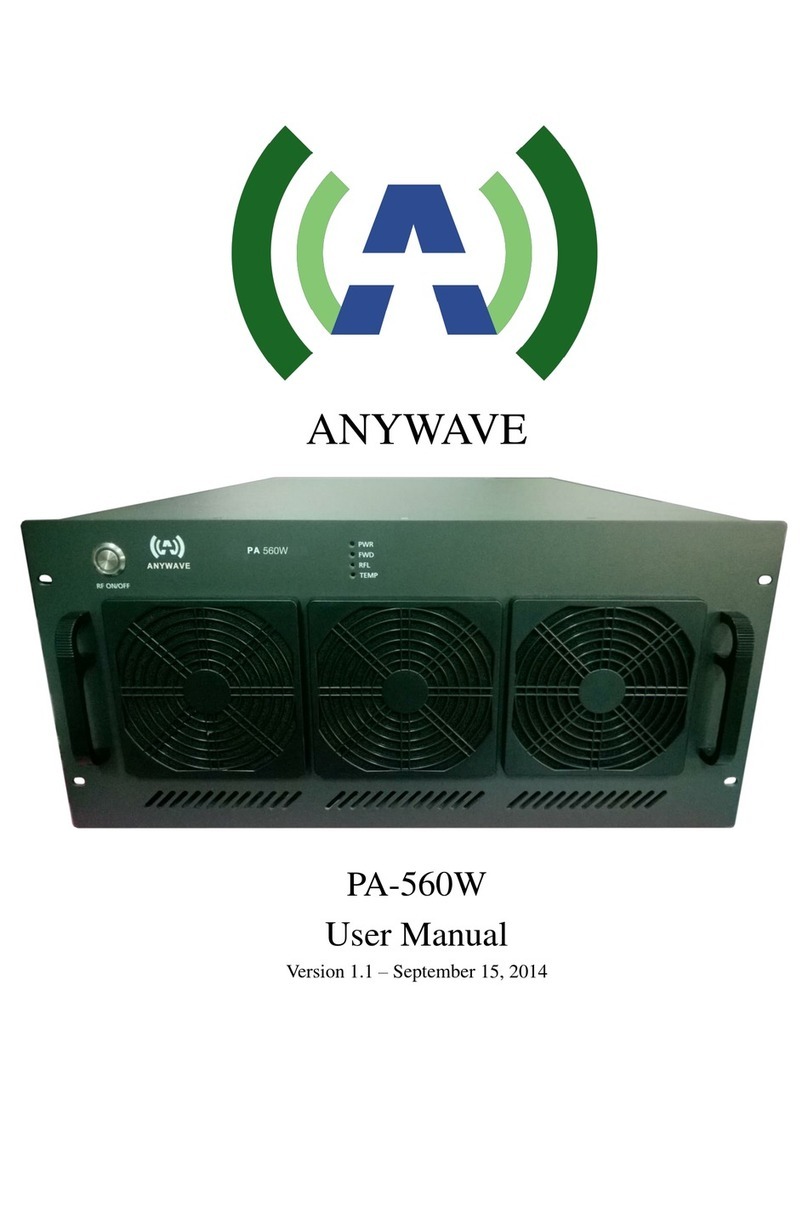
Anywave
Anywave PA-560W User manual
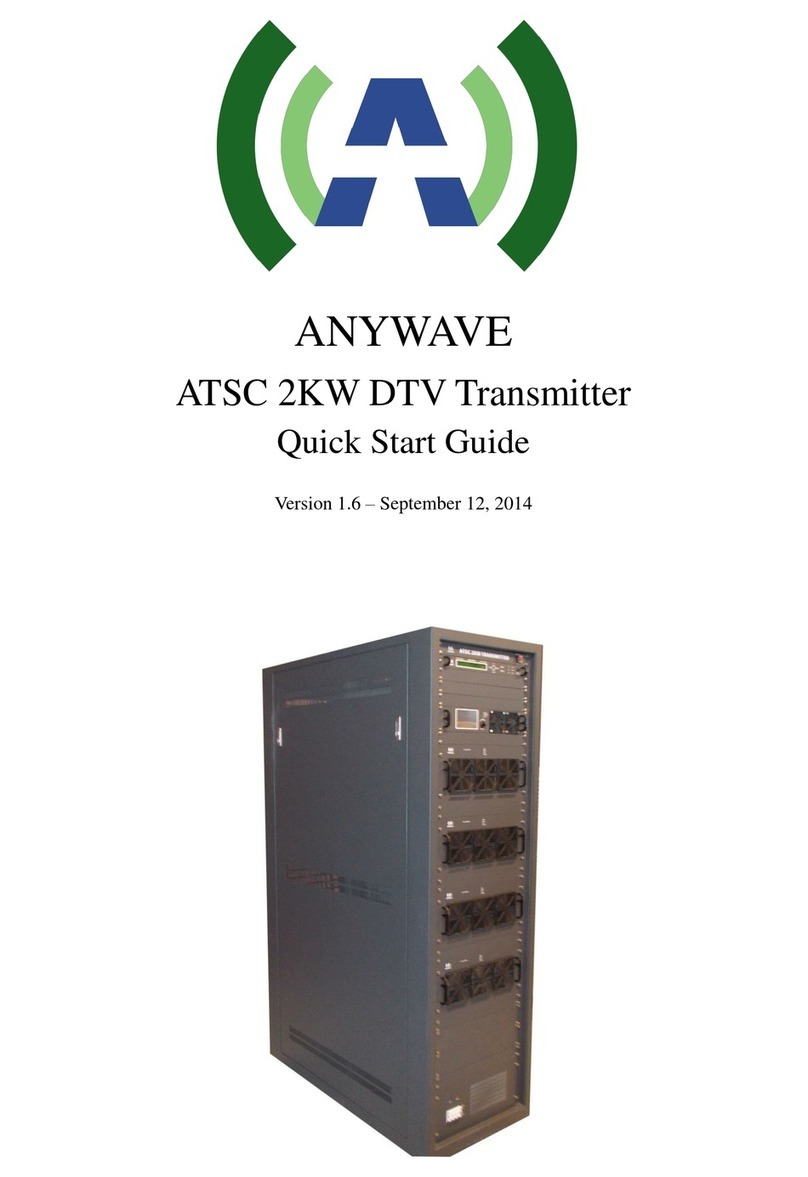
Anywave
Anywave ATSC 2KW User manual
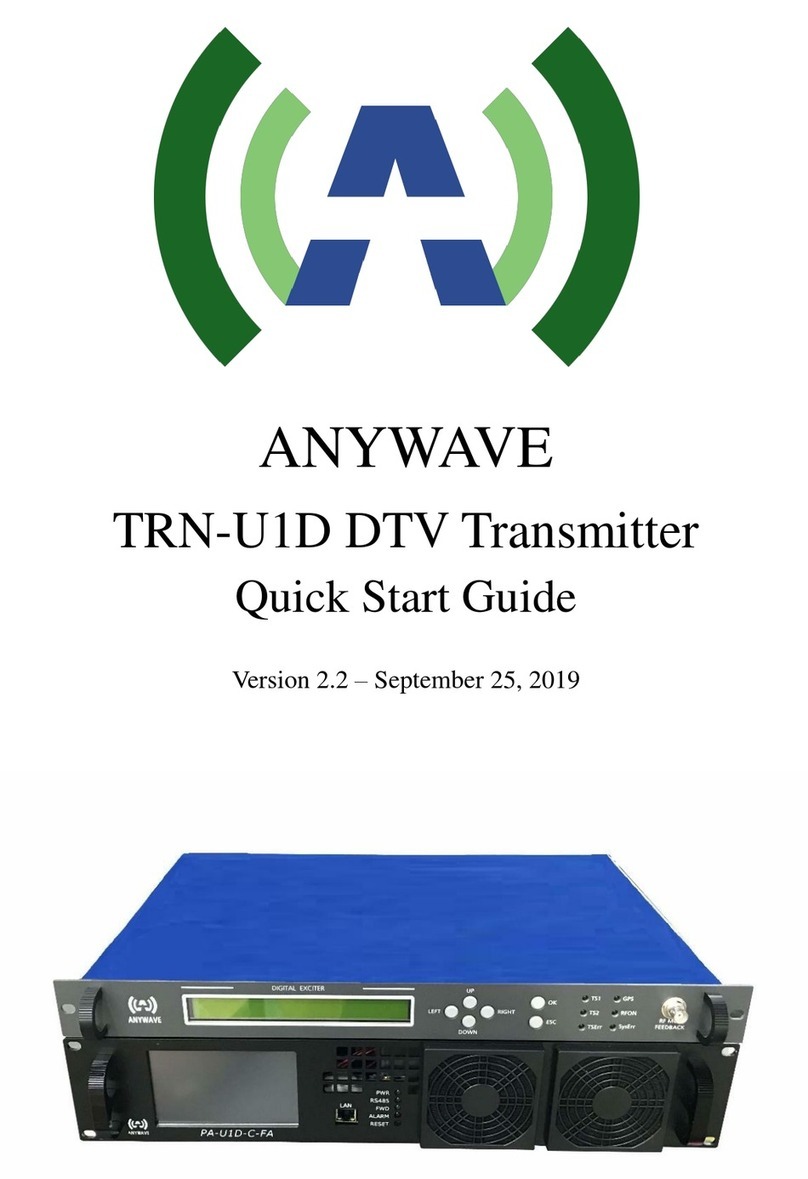
Anywave
Anywave TRN-U1D User manual
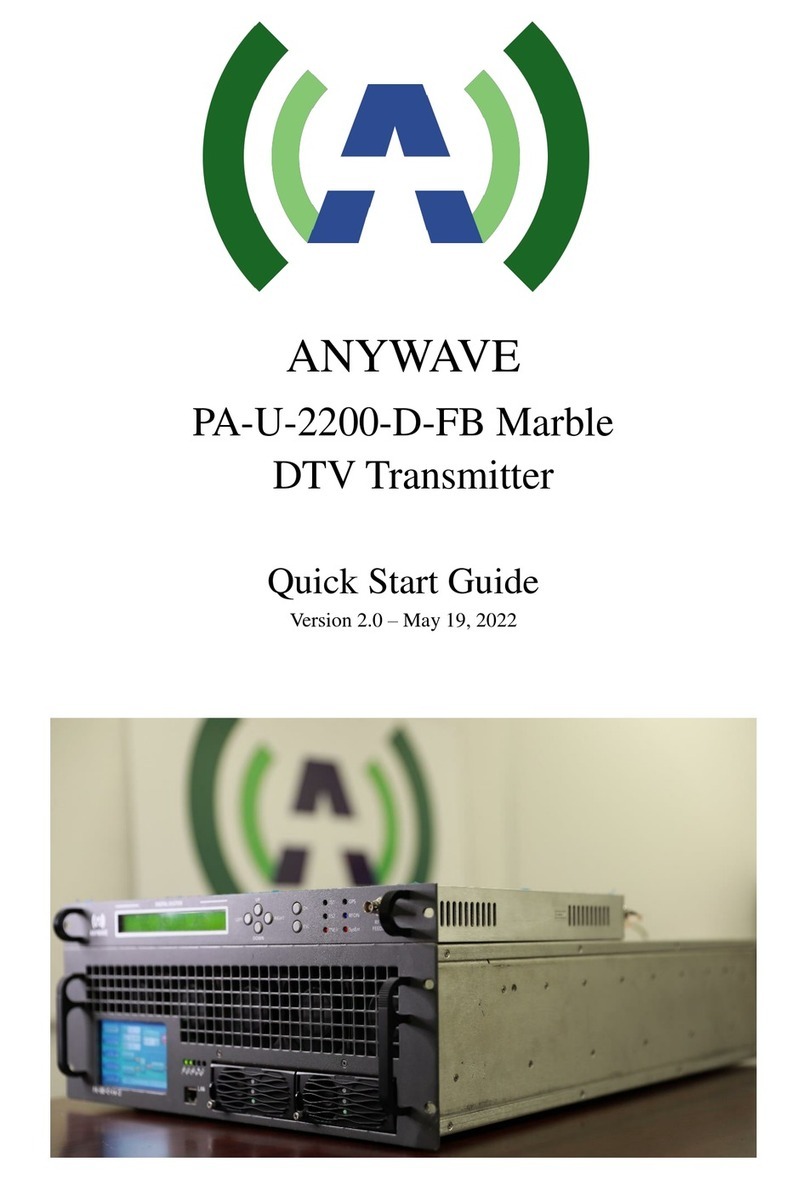
Anywave
Anywave PA-U-2200-D-FB Marble User manual

Anywave
Anywave ATSC VHF 100W User manual
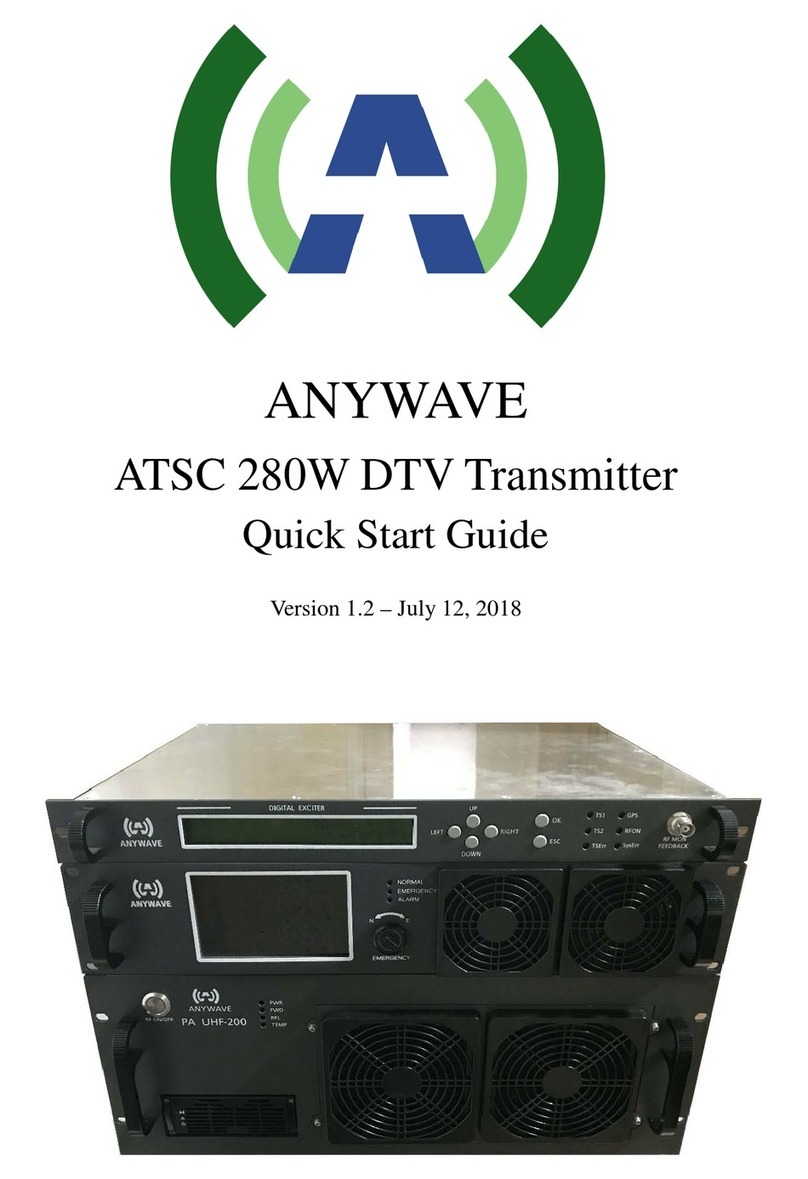
Anywave
Anywave ATSC 280W User manual
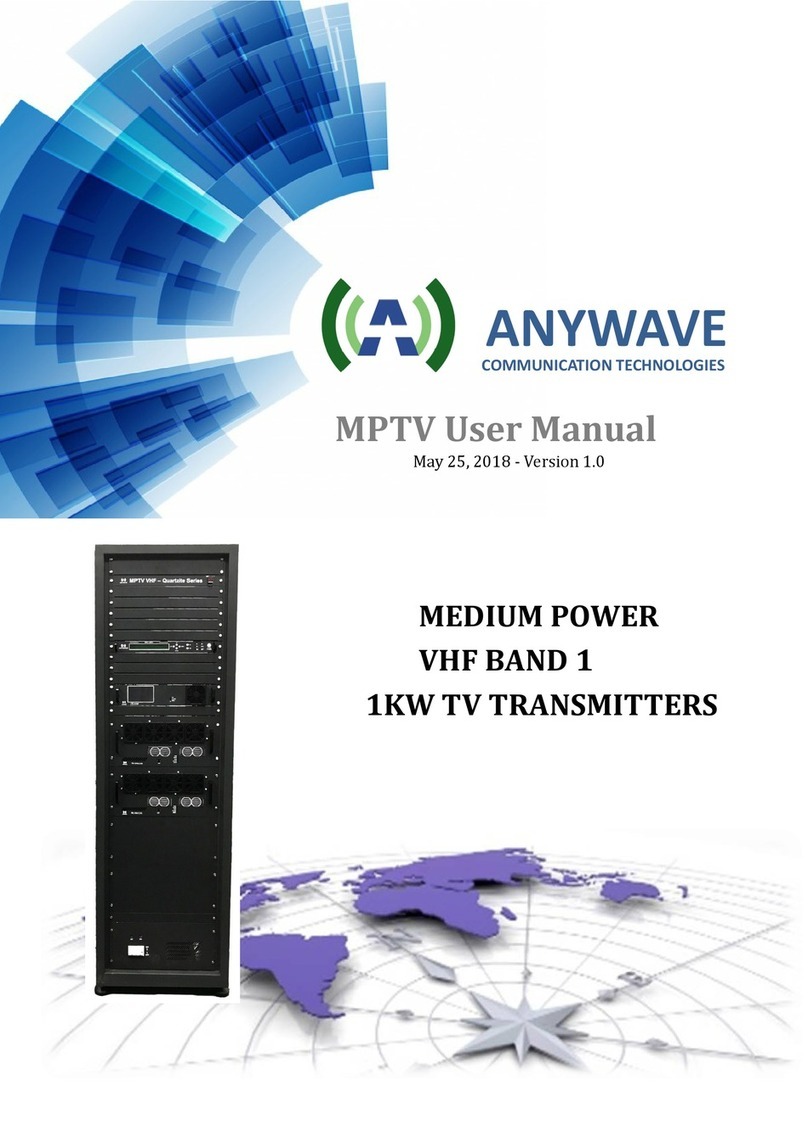
Anywave
Anywave MPTV User manual
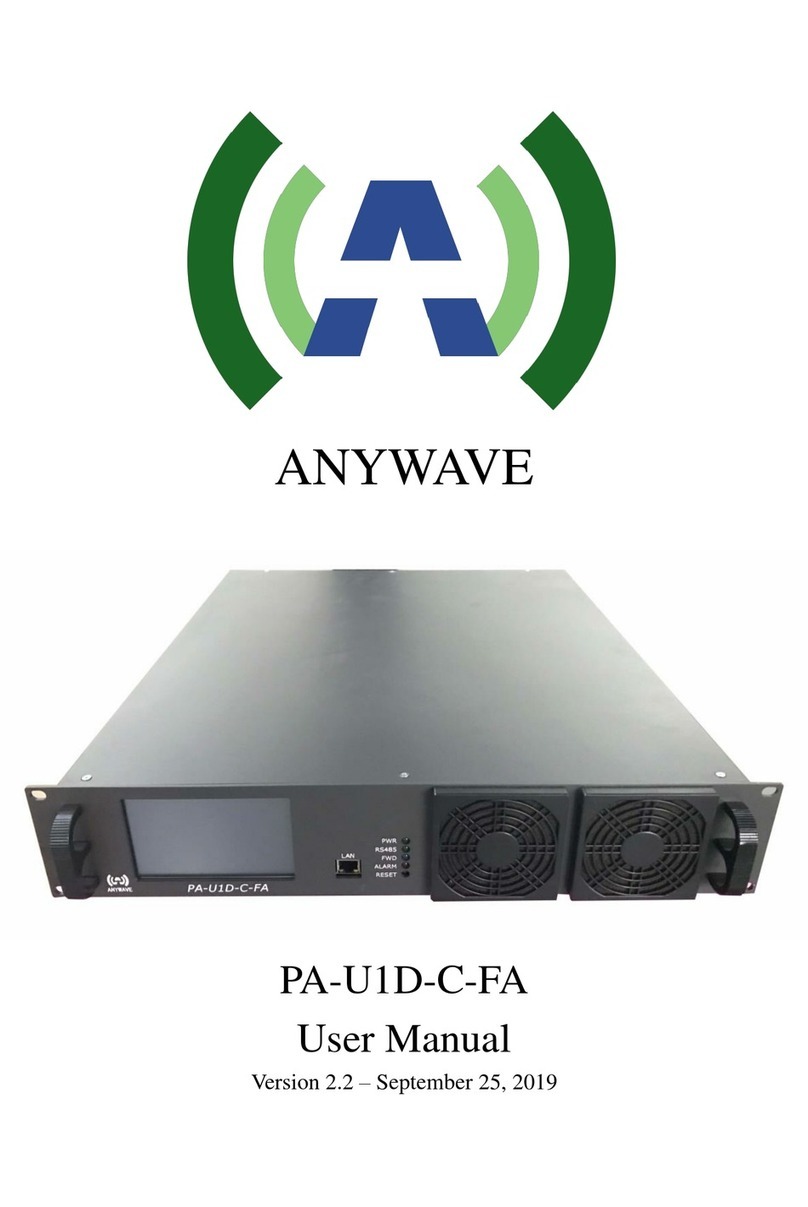
Anywave
Anywave PA-U1D-C-FA User manual
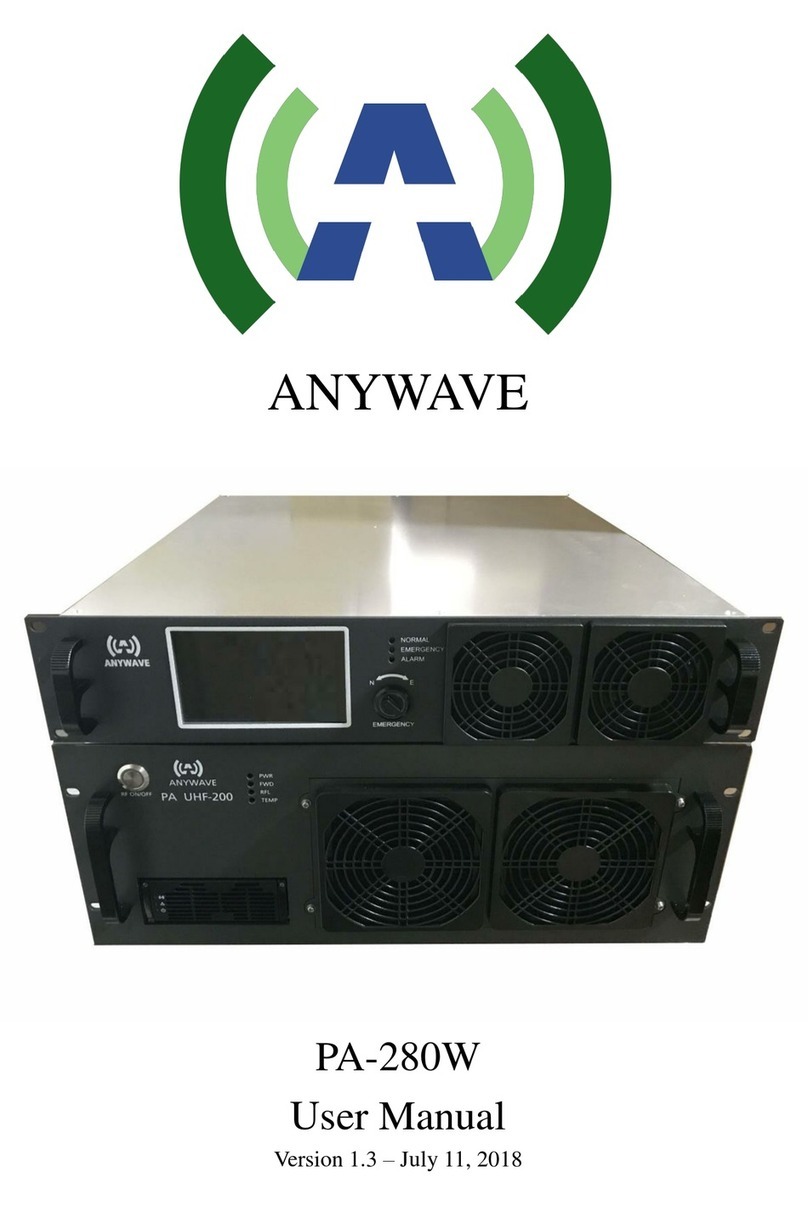
Anywave
Anywave PA-280W User manual
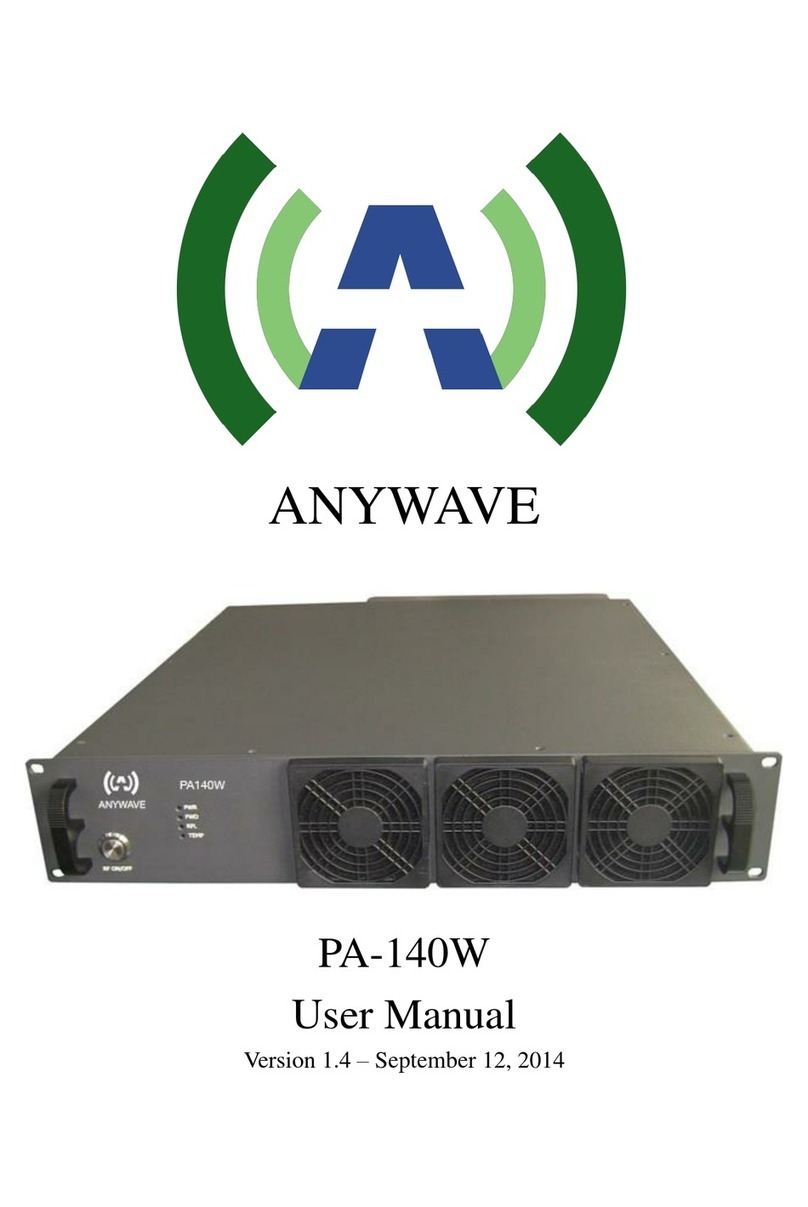
Anywave
Anywave PA-140W User manual
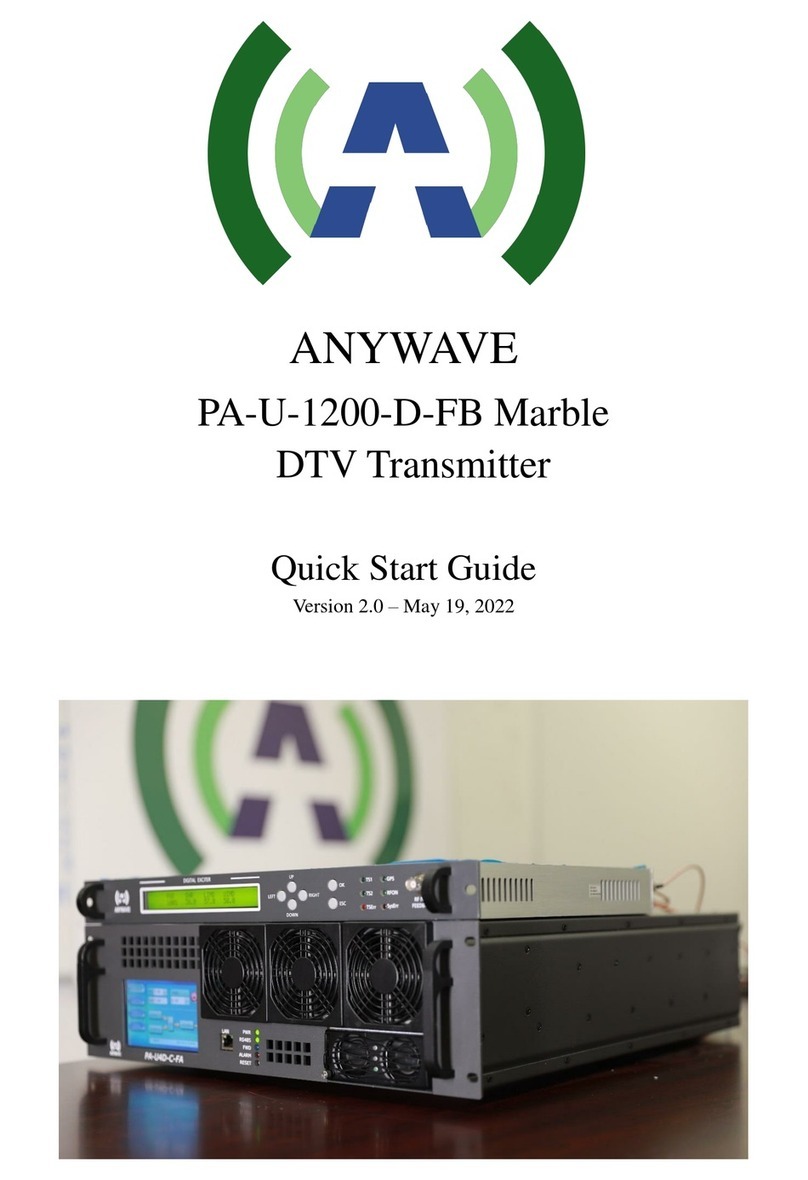
Anywave
Anywave Marble PA-U-1200-D-FB User manual
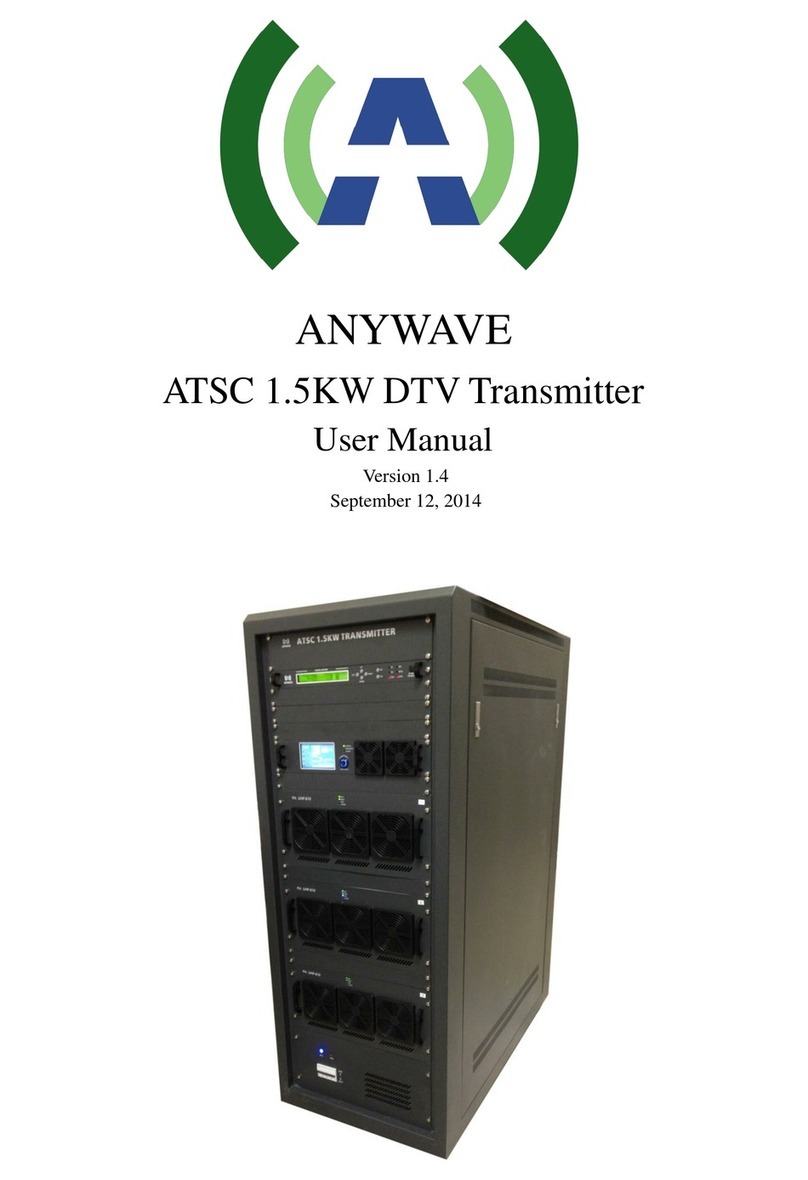
Anywave
Anywave ATSC 1.5KW User manual

Anywave
Anywave Marble Series User manual

Anywave
Anywave ATSC 25W User manual
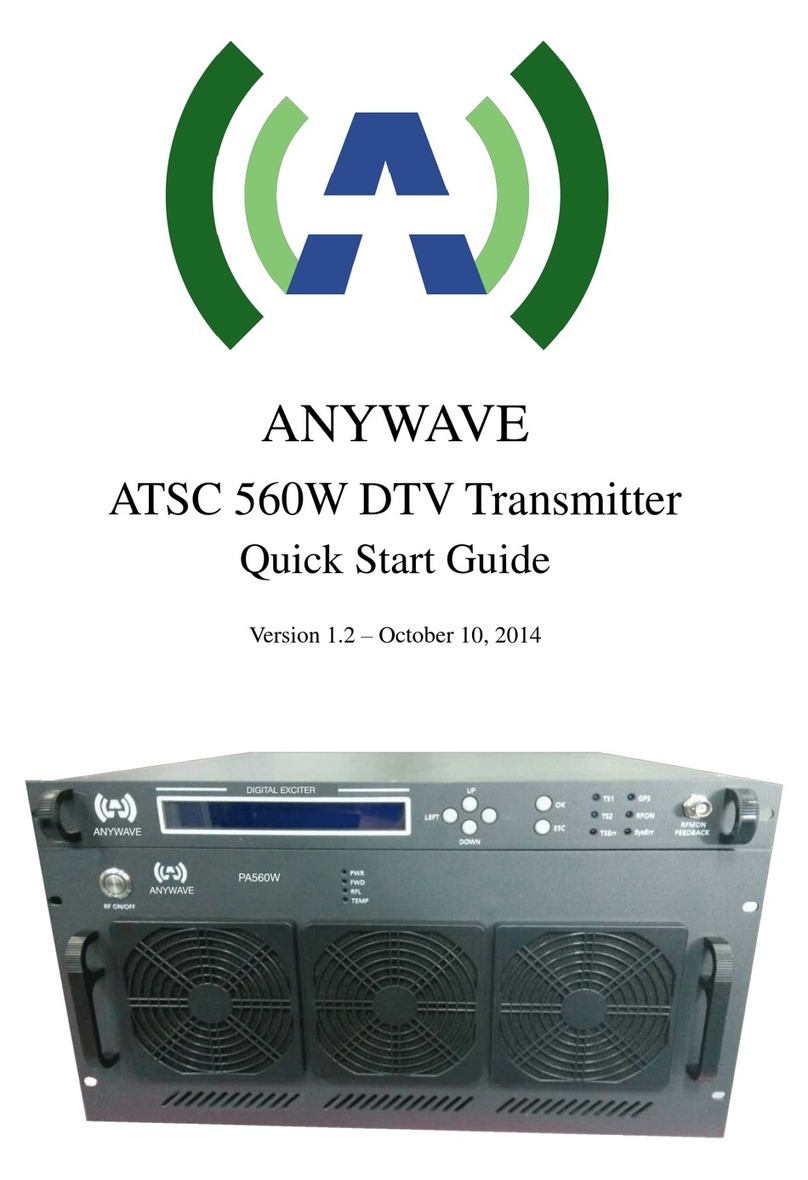
Anywave
Anywave ATSC 560W DTV User manual
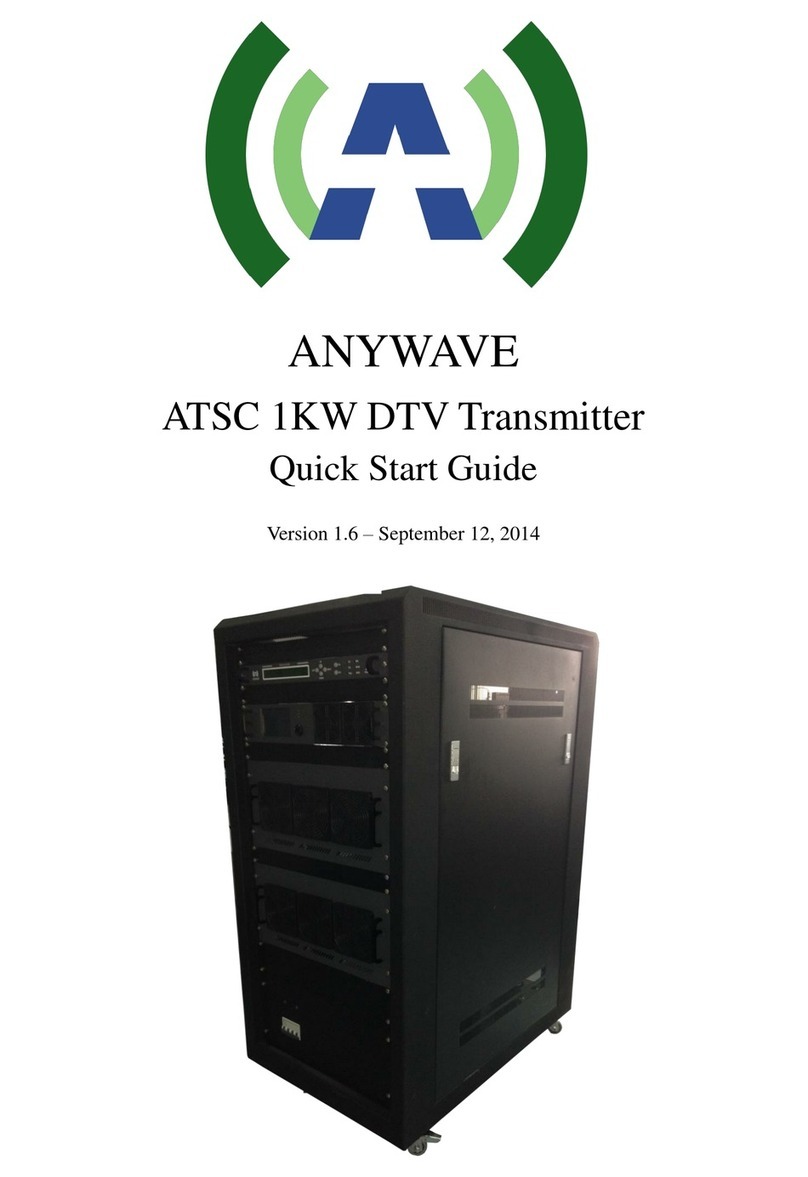
Anywave
Anywave ATSC 1KW User manual
Popular Transmitter manuals by other brands

Geo
Geo Web Pack quick start guide

Inovonics
Inovonics EchoStream EN1210W installation instructions

IKONNIK
IKONNIK KA-6 quick start guide

Rohde & Schwarz
Rohde & Schwarz SR8000 Series System manual

Audio Technica
Audio Technica UniPak ATW-T93 Installation and operation

NIVELCO
NIVELCO EasyTREK SCA-300 Series Programming manual
